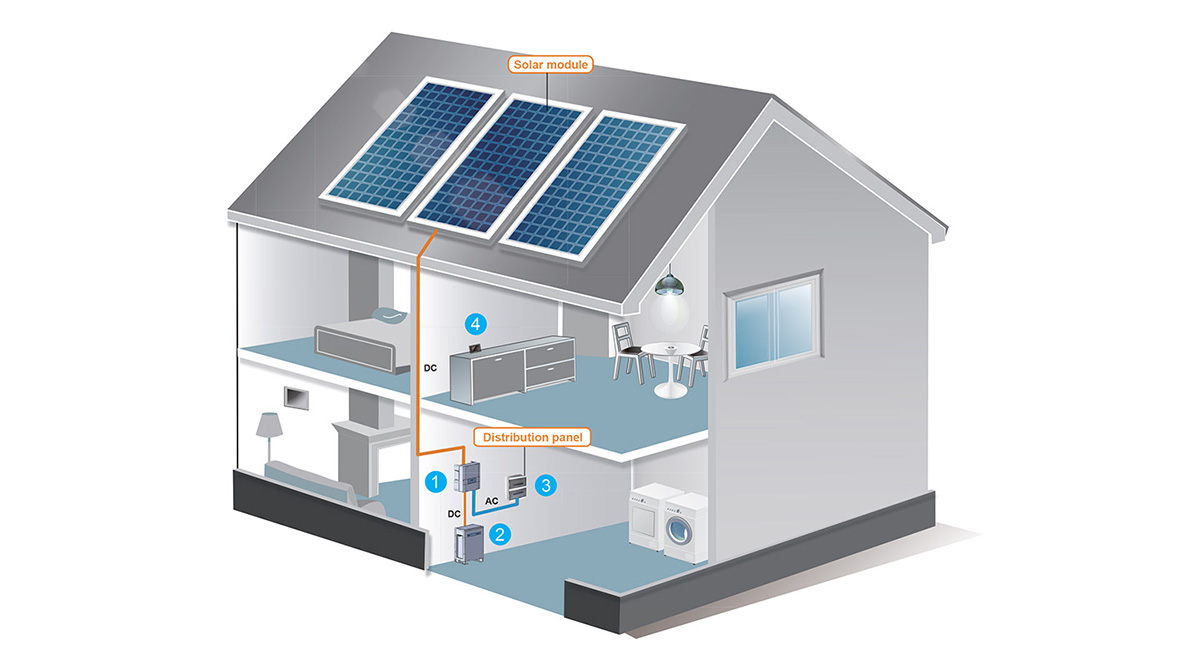


Sunlight hitting solar modules on the roof is converted into direct current electricity (DC). Each solar module is made up of many solar cells. The cells absorb incoming energy in the form of sunlight and due to the nature of the silicon photovoltaic material, electrons begin to flow generating an electrical current. Wiring captures the electrical currrent and combines it with power from other solar cells. The DC electricity produced by all the solar modules on the roof is carried by wiring to a solar inverter ❶. The inverter converts the DC electricity to alternating current electricity (AC) used by most applicances and electronic devices in the home. The AC power from the inverter is sent to an electrical panel ❸ where it is distributed throughout the home. A PV monitoring system, such as MyDeltaSolar cloud allows the homeowner to view their energy production on a Smart Monitor display ❹ or via a smartphone. Excess energy produced by the solar array that is not used is fed to the electrical grid.
If the inverter is a hybrid variety such as the Delta E5 inverter ❶, it can send solar electricity to a energy storage device such as the BX_6.0 Battery ❷ to allow the homeowner to make use of the energy after the sun goes down. With a PV system combined with energy storage the homeowner can realize the greatest independence from the local power company by producing their own electricity and using the battery power to run the household loads when they need it. Producing your own energy with a solar PV system is good for the environment because it is pollution and carbon-free and has little impact on the environment. With rising electricity prices in many countries, the use of PV and energy storage helps the homeowner to fix their energy costs and once the system is paid off, enjoy the benefits of free electricity from their PV system.